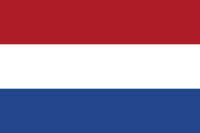
Photo from wikipedia
Around 1900, the Dutch East Indies was a multicultural and international society populated by Indonesians, Europeans, British Indians, Arabs and Chinese. The Chinese, although one of the colony’s ethnic minorities,… Click to show full abstract
Around 1900, the Dutch East Indies was a multicultural and international society populated by Indonesians, Europeans, British Indians, Arabs and Chinese. The Chinese, although one of the colony’s ethnic minorities, contributed considerably to its economic and urban development. This article examines the professional and private lives of three Chinese-Indonesians: Tjong A Fie, Oei Tiong Ham and Liem Bwan Tjie. Tjong was a first-generation Chinese who left China and settled in Medan where he soon became one of the wealthiest citizens. Oei was a second-generation Chinese. Born into a trading family in Semarang, the fortune he accumulated in the sugar industry and his exuberant lifestyle soon earned him the nickname ‘Sugar King’. Liem, the fourth-generation descendant of a successful, Semarang-based textile-business family, became a professional architect. Much of Liem’s work was commissioned by Chinese-Indonesians. What Tjong, Oei and Liem had in common was their ethnic and cultural origin, their local and supralocal prominence within Chinese communities in the Dutch East Indies and their pioneering and leading role as professionals. By focussing on Tjong, Oei and Liem as pars pro toto for the affluent and educated Chinese community, this article describes how these figures cut across colonial categories of culture and community. It also illustrates how their personal and professional preferences and choices were instrumental in introducing European idioms and approaches to architecture and town planning and thus in changing the appearance of cities in the Dutch East Indies.
Journal Title: Architectural Histories
Year Published: 2020
Link to full text (if available)
Share on Social Media: Sign Up to like & get
recommendations!